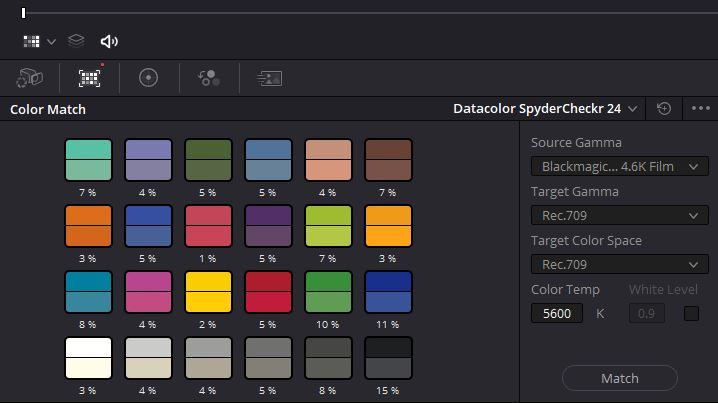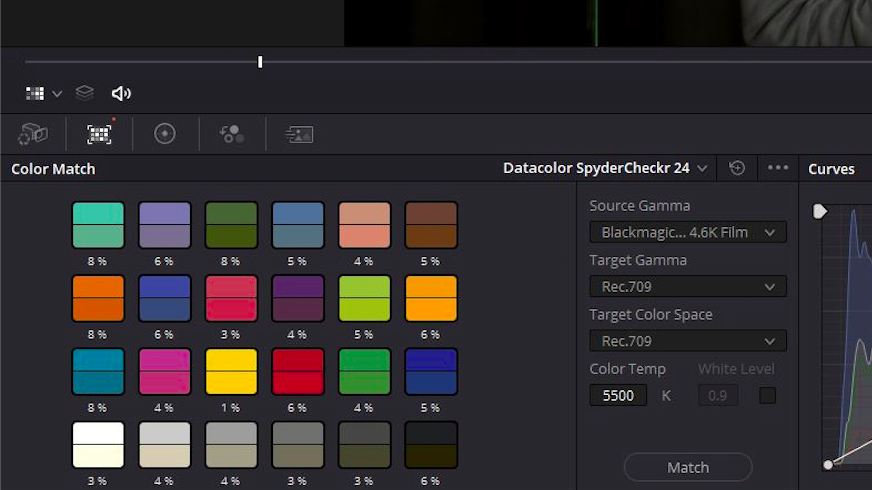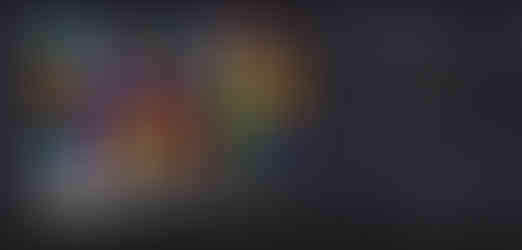Camera Tests, Pt. 3: ISO and Latitude Tests
- sveahartle
- Nov 15, 2019
- 6 min read
This week was dedicated to another round of filming camera tests and editing the footage hitherto. Since this was most likely the last possibility of filming any more camera tests, I decided to conduct some ISO tests of my two remaining contenders: the Blackmagic Cinema Camera 2.5k and the Blackmagic URSA Mini Pro 4.6k.
Disclaimer
Whilst I am aware that I considered testing my Canon EOS 600D, I quickly realised that throwing this camera into the mix would not have been feasible within the remaining time frame as the amount of footage (and editing of said footage) already exploded to a nearly exponential degree.
And since not only the studio time, but especially the editing time was tremendously restricted by deadlines across three years, I decided to instead focus on only testing the Blackmagic cameras available to us and testing them in more depth instead. These will be the cameras we will most likely be using for our FMP anyways, so there is no loss in not applying the Canon camera.
As such, I furthermore decided to extend my editing times from until 17.00 to closing of university on three of my editing days, which I filed in person with our technician demonstrator.
Monday, 11 November 2019
Monday started as always by taking out the equipment and setting up the studio for our purposes. Since I decided to test the visual noise of each camera at all of their respective ISOs, which are: ISO200, ISO400, ISO800, ISO1600.
As Suny Behar and Gavin Finney pointed out, these ISO tests are usually conducted in complete darkness, using candles and a torchlight to check for artefacts and visual noise that occurs in relation to lit-up objects within the dark.
While this sounds like a marvellous idea to test, I also wanted to conduct one last lighting test. However, since time, as mentioned above, was scarce, I decided that I could conduct both tests if I combined them into one and thus I ditched the idea of having complete darkness for my Sci-Fi lighting.
Such a procedure was also suggested by Shane Hurlbut, who considers pure lab tests as misleading, thus preferring testing under the circumstances that you would encounter on a particular shoot. As such, I decided to go down that route, killing two birds with one stone.
Thus, I followed the lighting procedure as previously conducted and mapped out in my lighting plans:

However, I decided to tweak the previous plan a bit since I felt that the previous lighting test could still be improved. As such, I killed one of the LEDgo lights and reduced the intensity of the other lights, resulting in this final lighting plan:

After that, I set up both cameras, using the exact same settings as I did last time:
1080p
25fps
Whitebalance of 3.200K
Shutter speed of 1/50 (URSA) and shutter angle of 180° (BMCC)
ProRes 422
Aspect ratio of 2.39:1
Dynamic range set to ‘Film’
However, this time, I put the URSA camera on a 1.5 Samyang 85mm lens and the BMCC on a 1.5 Samyang 50mm lens. Metering the light levels of my stand-in Hannah, I received a reading of f.1.0 for an ISO of 200 (which was the ISO I wanted to start with). However, since our lenses are not faster than f1.5, I set them to this aperture instead, which is technically more than a stop underexposed on both cameras. This proved to be the same for all ensuing ISOs I’ve tested.
Having done that, I then started recording clips with both cameras and flicking through all ISOs, saving the native ISO of 800 for both cameras for the end. With these tests conducted, we then moved onto the required camera tests for Hannah.
Wednesday, 13 November 2019 Wednesday was spent in the Editsuite checking, analysing, ordering, and editing some of the footage. While I was not able to already edit the ISO-tests I conducted, I had a quick check of them and was pleased with the results.

Whilst I would not call these tests a further development or final draft of my lighting design, I do regard them as more toned down alternatives.
Cleaning Up
I then moved onto cleaning up the previous edits a bit more, which included some trims, Picture-in-Picture effects of some clips, improvements of the titles in Avid (AVID Titler+ has become somewhat less of a pain but still carries room for improvement as it can become temperamental sometimes) and the import of the clips in DaVinci Resolve for colour correction and analysis.
Colour Test
Thus, I started with the sensor comparison footage I took of Eline and colour corrected the two clips by applying the Colour Match function of DaVinci using the Spydercheckr24 colour chart. Because of this, the image from the Blackmagic URSA Mini Pro 4.6k moved from this, straight off the camera:

To this:

Showing these differences in colour matches expressed in percent:

I chose the target gamma and target colour space of Rec709 for this example since I personally like this most at the current point in time.
The same I did for the Blackmagic Cinema Camera 2.5k. Another problem ensued however, as I realised that there was no preset for the source gamma of the Blackmagic Cinema Camera available in DaVinci Resolve 16. As such, and even though I know that the colour spaces of both camera sensors are different, I decided to pick the preset for the Blackmagic URSA Mini Pro 4.6k for the Cinema Camera to see where it would bring me:

Although people could argue that Eline’s skin tone is slightly more reddish than compared to the footage of the URSA, and this is also founded in the differences in percentage of the Spydercheckr24’s red colour swatches, the difference is less than 5% in each respective colour, meaning that there is no statistically relevant deviation.
In fact, Behar argued that a colour match of 70% in the colour correction stage would already be sufficient to make it work for any subsequent processing, as the ensuing colour grading process would be able to bridge that difference. Whilst I would not blindly agree to this claim in all and every circumstance, I do consider the differences presented here as within acceptable margins – especially since they are rather low in comparison.
As such, here are the comparisons of the ungraded and the corrected versions of both cameras:
Latitude Tests Lastly, I moved onto the subject of Latitude tests. As I already briefly described in my blog entry "Camera Tests, Pt. 1: The Theory of Camera Testing", dynamic range and latitude are two different concepts. While dynamic range describes the total range a camera can cover from the darkest to the brightest part of an image without losing information in either area, latitude describes a) How much of a certain exposure can be manipulated by stopping up/down before information gets lost, and b) How much of that information can ultimately be recovered in post.
For this, I then ventured into the process of colour correction for all the previously shot footage of both cameras concerning underexposure and overexposure, using the same method for all the footage, as can be seen in this example:
This time round however, for the Blackmagic Cinema Camera 2.5k, I decided to use the source gamma preset called Blackmagic Design Film in order to experiment a bit more. Here, I found the skin tone rendition of my stand-in Hannah closer to reality:
However, this source gamma preset proved to be a problem in the further course of the overexposure sequence as the colour in the clipped (overexposed) areas shifted, causing strange artefacts:
As you can see, this is not acceptable and needs to be amended. However, since my time for that day was up, I will have to take it up again next week and see whether this issue can be remedied by choosing the previous source gamma preset for the Blackmagic URSA Mini Pro 4.6k or whether this issue is due to the sensor of the BMCC.
We will find out next week!
References:
Behar, S. (2016) How to Perform a Camera Test: Narrow Your Focus to Three Simple Things [online] Image taken from: https://www.moviemaker.com/archives/mm_guide_2016/how-to-perform-a-camera-test/ [Accessed on 15 November 2019]
CookeOpticsTV (2016) Testing your Camera and Lenses || Masterclass - Gavin Finney [online] Available at: https://www.youtube.com/watch?v=kmkYn3_O2UU [Accessed on 15 November 2019]
Murie, M. (2014) Cinematographer Shane Hurlbut on Camera Tests and the Joy of Older Lenses [online] Available at: https://filmmakermagazine.com/87556-cinematographer-shane-hurlbut-on-camera-tests-and-the-joy-of-older-lenses/#.Xbh4Py33600 [Accessed on 15 November 2019]




























Comments